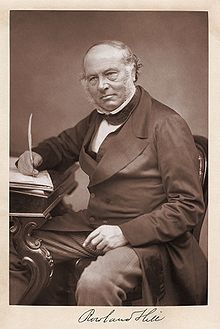Next time you go to the grocery store, pick up a red cabbage for a little science fun with acids and bases. Red cabbage (which actually is purple) makes an excellent indicator. That means it reacts to acids and bases in a way that is easy to measure.
Step 1 Prepare your indicator
There are several ways you can prepare your indicator.
Method 1: Chop one-fourth of a head of cabbage into a few big pieces. (I use the bottom part and any parts that might be thrown away.) Put the cabbage in a pan with 3 to 4 cups of water. Boil until the cabbage is pale and without color. Water should be purple. Strain out cabbage. Let the liquid cool.
***You can use the indicator as a liquid or use it as a dye for coffee filters or card stock to make indicator paper. The down side is you have to let it dry before using.
Method 2: This makes quick liquid indicator. The results will be blue not purple. It will work but not as well. To make, coarsely chop one third to one fourth of a head of cabbage. Fill a blender one half full of cabbage. Add enough water to just cover the cabbage. Coarse blend for 1 minute until water becomes dark blue. Strain out cabbage. Repeat process for more liquid indicator.
Note: This method will not work as well as the first method but will still get results.
Method 3: (this is my preferred method...it is less work to prepare and clean. Also, I like that kids are involved in creating the indicator). You will need (1) a piece of cabbage (about 1/3 to 1/4 of a leaf, also the thicker the easier to handle) (2) a piece of card stock or an index card (you can use regular paper but it may tear. (3) some q-tips
Rub the cabbage on the card until you have most of the card purple. You will need to rub very hard.
Step 2 Collect your substances to test
Suggested substances are: bar soap, liquid soap or shampoo, vinegar, window cleaner, lemon juice or other citrus
Step 3 Test your substances
 This is Sir Rowland Hill who was born on December 3, 1795 in England at a place called Worcestershire. Those were the days when mail was carried by runners or on cycles and wagons and delivered by hand for a fee. So mail delivery had too many problems such as getting lost, being very slow, difficult to trace and then no proper fee system which would make it sometimes very expensive as per the wishes of the deliverer. So what did Sir Hill do? He created the system we see today in post offices across the world and in 1840, he created the world's first adhesive postage stamp that cost one penny.
This is Sir Rowland Hill who was born on December 3, 1795 in England at a place called Worcestershire. Those were the days when mail was carried by runners or on cycles and wagons and delivered by hand for a fee. So mail delivery had too many problems such as getting lost, being very slow, difficult to trace and then no proper fee system which would make it sometimes very expensive as per the wishes of the deliverer. So what did Sir Hill do? He created the system we see today in post offices across the world and in 1840, he created the world's first adhesive postage stamp that cost one penny.

